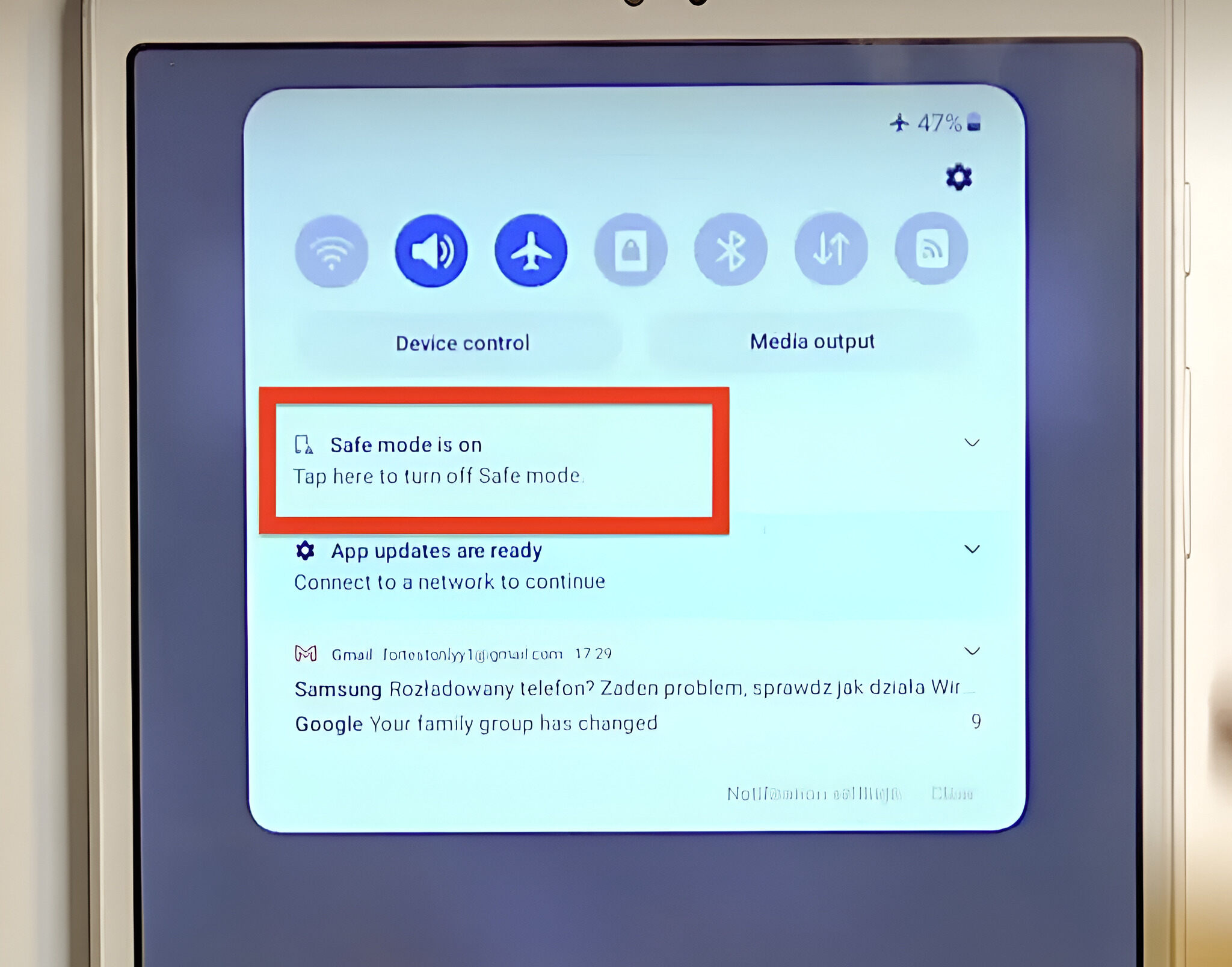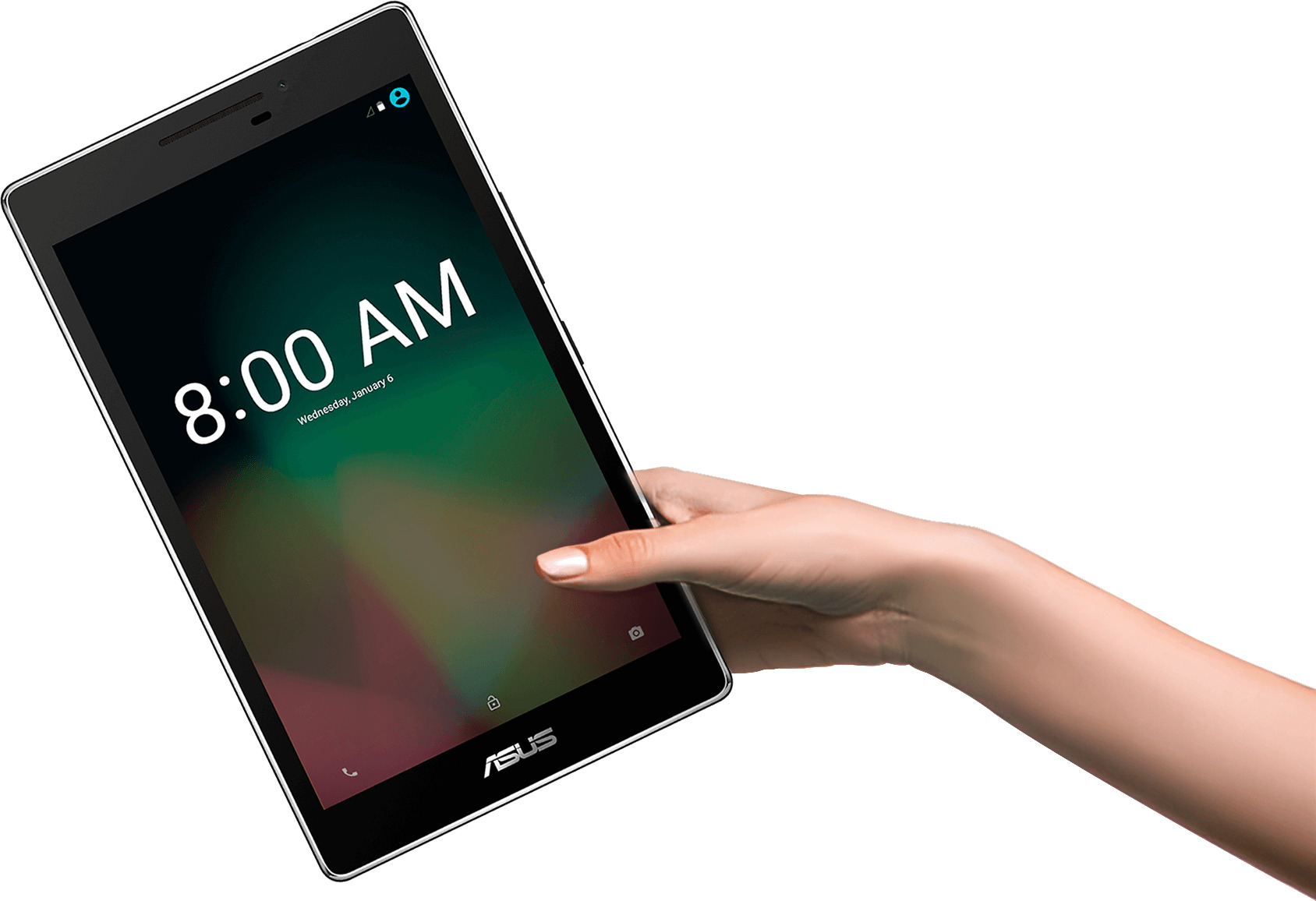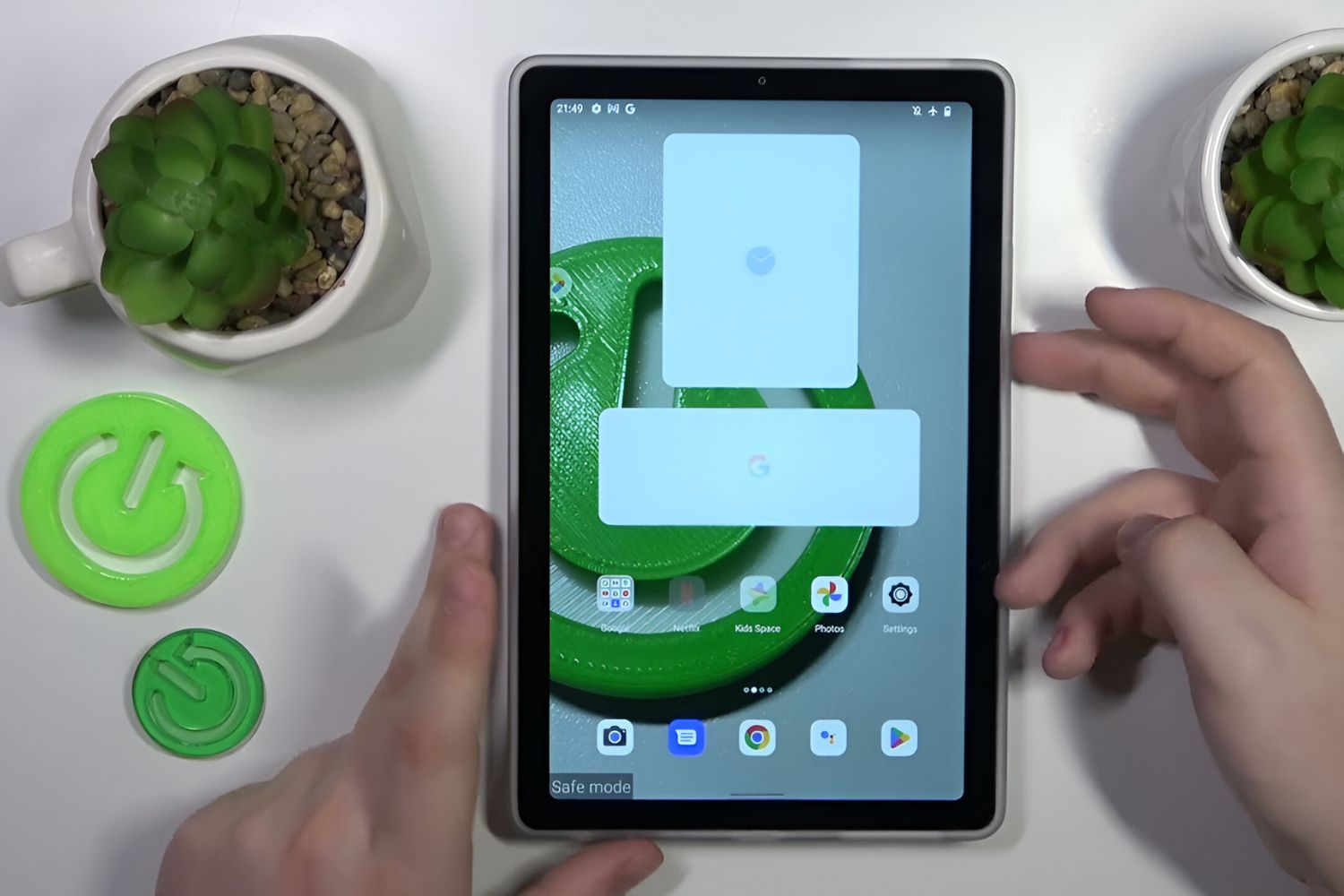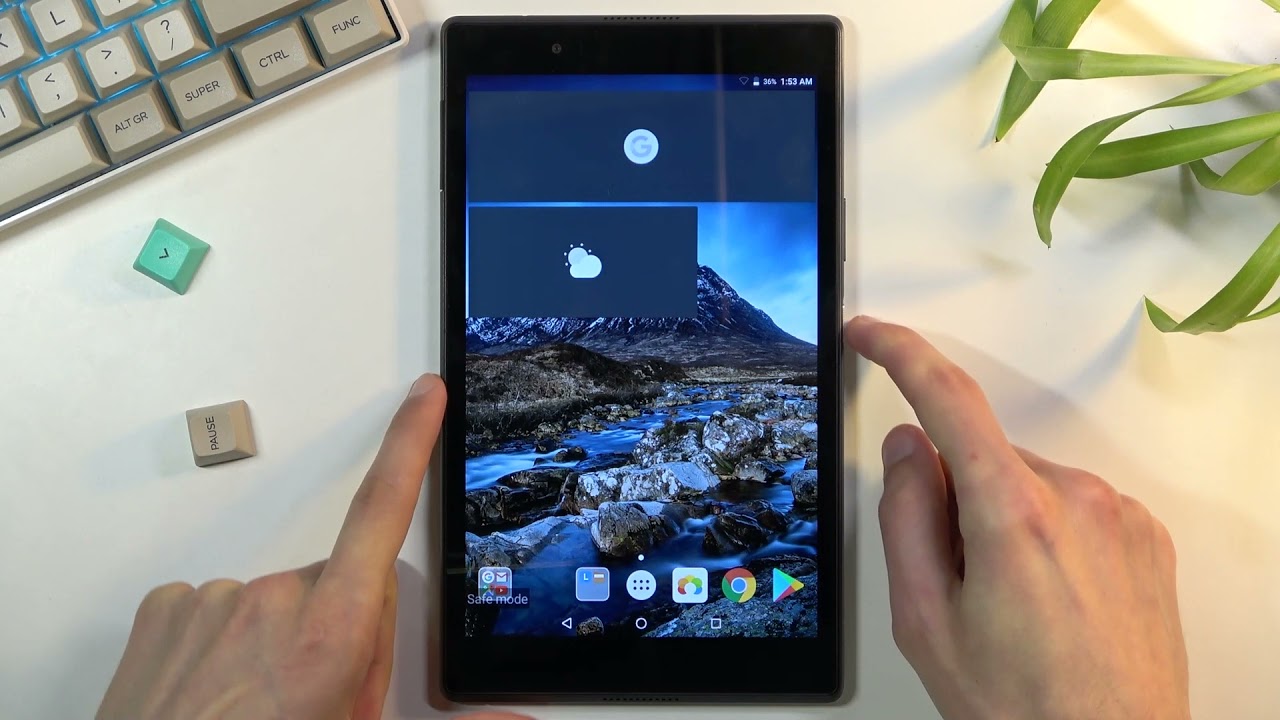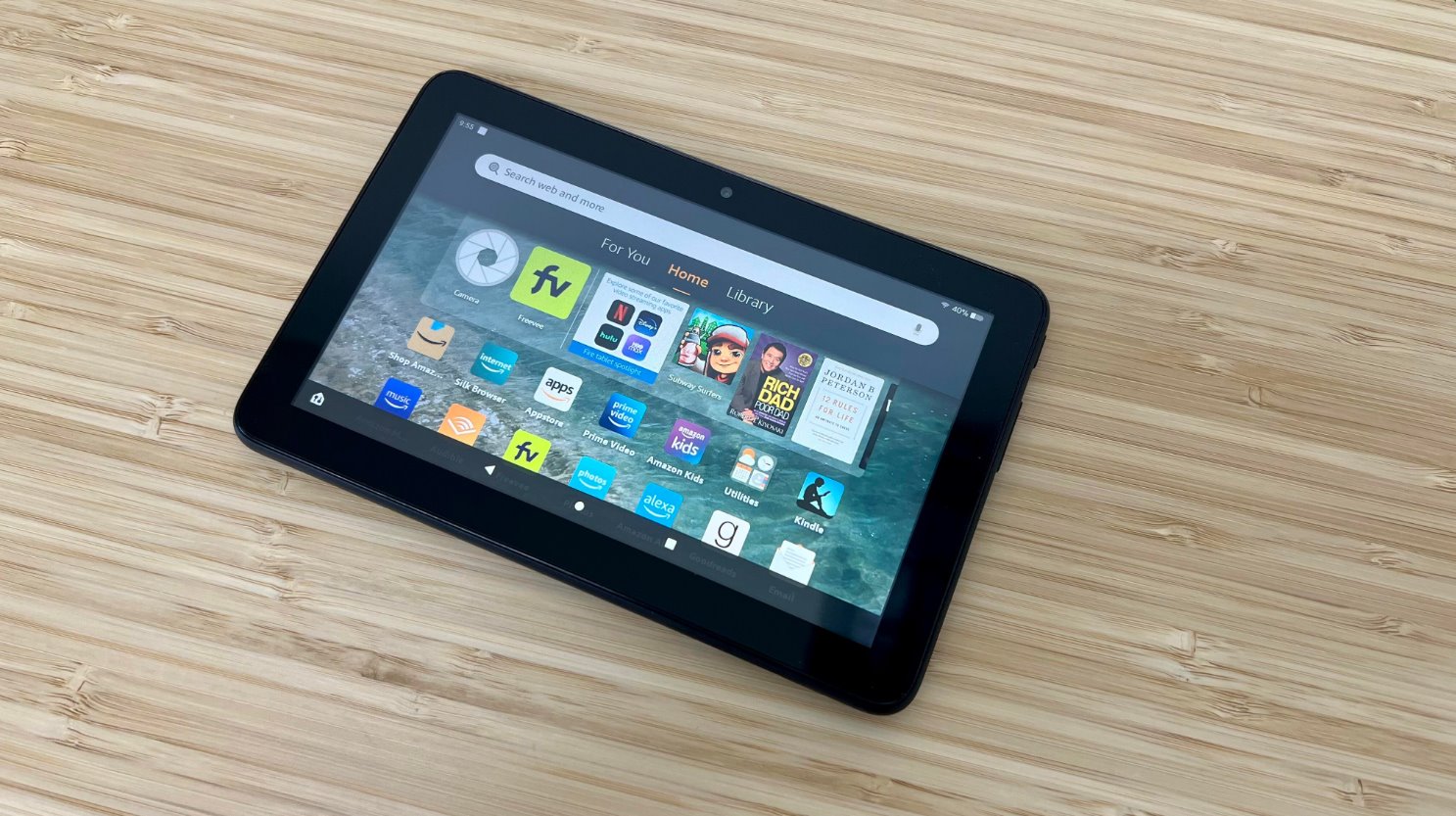Introduction
Welcome to the world of tablets, where convenience and functionality meet in a sleek and portable device. Tablets have become an integral part of our daily lives, serving as our go-to tool for browsing the internet, watching videos, playing games, and staying connected with friends and family. But what happens when your tablet starts acting up? Enter Safe Mode, a troubleshooting feature that can help you identify and resolve potential issues.
Safe Mode is a powerful tool that allows you to diagnose problems on your tablet by disabling all third-party apps and services. When Safe Mode is enabled, only the essential system functions are running, providing a clean and stable environment for troubleshooting. So, whether you’re experiencing crashes, performance issues, or strange behavior on your tablet, Safe Mode can be a valuable tool to help you pinpoint the problem.
In this article, we will take a closer look at what Safe Mode is, why you may need to use it on your tablet, and how to access and exit Safe Mode on both Android tablets and iPads.
What is Safe Mode?
Safe Mode is a diagnostic mode that can be activated on your tablet to troubleshoot and troubleshoot problems. When your tablet is in Safe Mode, only the essential system applications and services are running, while all third-party apps are disabled. This allows you to isolate any issues caused by recently installed apps or conflicting software.
In Safe Mode, your tablet operates in a limited capacity, free from any unnecessary processes and background activities. It’s like starting your tablet with a clean slate, allowing you to identify and address any problematic behavior.
In Safe Mode, you will notice that the overall performance of your tablet may be affected. Some features and functionalities may be temporarily disabled to maintain a stable environment. However, this is a temporary state, and once you exit Safe Mode, your tablet will return to its normal operation.
Safe Mode is not specific to tablets; it is a feature that is also available on other devices, such as computers and smartphones. It is commonly used as a troubleshooting tool to identify and resolve issues without the interference of third-party apps or services.
Now that you have a better understanding of what Safe Mode is, let’s explore the reasons why you may need to use it on your tablet.
Why Would I Need to Use Safe Mode on my Tablet?
There are several scenarios where you might need to use Safe Mode on your tablet:
- Troubleshoot App Issues: If you notice that a particular app is causing your tablet to crash, freeze, or behave abnormally, Safe Mode can help you identify whether the issue is caused by that specific app. By disabling all third-party apps in Safe Mode, you can determine if the problem persists or if it is resolved, indicating that the issue lies with a particular app.
- Detect Malware or Viruses: If you suspect that your tablet may have been infected with malware or viruses, Safe Mode can be an effective way to detect and remove such threats. By disabling all third-party apps in Safe Mode, you can eliminate any potentially malicious apps from running and perform a thorough scan using your preferred antivirus software.
- Resolve Performance Issues: If you are experiencing lags, slowdowns, or decreased performance on your tablet, Safe Mode allows you to identify if the problem is caused by a specific app or system function. By temporarily disabling non-essential apps and services, you can determine if the sluggishness is due to an app or if it is a hardware or system-related issue.
- Diagnose System Updates: Sometimes, after installing a system update, you may encounter compatibility issues or errors. Safe Mode can help you determine if the problem is caused by the update itself or by an app that is not compatible with the new software version. By temporarily disabling all third-party apps and services, you can assess if the issue persists without their interference.
These are just a few examples of why you may need to use Safe Mode on your tablet. It is a useful tool that allows you to troubleshoot and diagnose potential problems without the interference of third-party apps or services. Now that you understand why Safe Mode is essential, let’s explore how to access it on your tablet.
How to Access Safe Mode on Android Tablets
Accessing Safe Mode on your Android tablet may vary slightly depending on the manufacturer and specific model. However, the general procedure is as follows:
- Power Off your Tablet: Press and hold the Power button on your tablet until the power menu appears.
- Long Press Power Off: Long-press the “Power Off” option on the power menu. This action will trigger a prompt asking if you want to reboot your tablet in Safe Mode.
- Tap “OK” or “Yes”: Tap the “OK” or “Yes” button to confirm that you want to enter Safe Mode.
- Wait for your Tablet to Restart: Your tablet will then restart and boot up in Safe Mode. You will notice the words “Safe Mode” in the bottom-left or top-right corner of the screen, indicating that your tablet is now running in Safe Mode.
Once your tablet is in Safe Mode, you can start troubleshooting by observing if the problem persists or if it is resolved. Keep in mind that only essential system apps and services are running in Safe Mode, so some features and functionality may be limited.
If you want to exit Safe Mode on your Android tablet, simply restart your device. After the restart, your tablet will boot up in normal mode, allowing all apps and services to run.
It’s worth noting that the specific steps to access Safe Mode may differ on certain Android tablet models. If the above method does not work for you, it is recommended to consult the manufacturer’s website or user manual for precise instructions tailored to your specific tablet model.
Now that you know how to access Safe Mode on an Android tablet, let’s move on to exploring how to access it on an iPad.
How to Access Safe Mode on iPad
iPads, like Android tablets, have a Safe Mode feature that can help you troubleshoot issues by running only essential system functions. To access Safe Mode on an iPad, follow these steps:
- Hold the Power Button: Press and hold the Power button located at the top or side of your iPad until the power slider appears on the screen.
- Slide to Power Off: Move the power slider from left to right to initiate the power off sequence for your iPad.
- Hold the Volume Up Button: While your iPad is powering off, press and hold the Volume Up button located on the side of your device.
- Release the Volume Up Button: When you see the Apple logo appear on the screen, release the Volume Up button. Your iPad will now start up in Safe Mode.
Once your iPad is in Safe Mode, you can proceed with troubleshooting and identifying any issues. It’s important to note that Safe Mode on iPad disables all third-party apps, allowing you to assess if the problem persists without their interference.
To exit Safe Mode on your iPad, simply restart your device. After the restart, your iPad will boot up in normal mode, and all apps and services will resume their usual operations.
Please be aware that the process of accessing Safe Mode may differ slightly on different models or iOS versions. If you encounter any difficulties or your iPad does not enter Safe Mode using the above steps, refer to the Apple support website or the user manual specific to your iPad model for detailed instructions.
Now that you know how to access Safe Mode on your iPad, let’s move on to what you can do in Safe Mode on both Android tablets and iPads.
What Can I Do in Safe Mode?
When your tablet is in Safe Mode, you can perform several actions to diagnose and troubleshoot the issues you are facing. Here are some key things you can do:
- Identify Problematic Apps: One of the main purposes of Safe Mode is to determine if a specific app is causing problems on your tablet. In Safe Mode, all third-party apps are disabled, allowing you to observe if the issue persists without their interference. If the problem disappears in Safe Mode, you can conclude that a recently installed app is the culprit.
- Uninstall Suspicious Apps: While in Safe Mode, you can uninstall any recently installed apps that you suspect may be causing issues. By removing these apps, you can see if the problem resolves itself once you exit Safe Mode and return to normal operation.
- Scan for Malware or Viruses: Safe Mode creates a controlled environment for scanning your tablet for malware or viruses. With all non-essential apps and services disabled, you can run a comprehensive scan using your preferred antivirus software to detect and remove any potential threats.
- Diagnose System Updates: If you recently installed a system update and started experiencing issues, Safe Mode can help you identify if the update is the cause. By temporarily disabling third-party apps and services, you can assess if the problem persists without their interference, indicating that the issue lies with the system update.
- Test System Functions: Safe Mode allows you to evaluate how your tablet functions in a clean and minimal environment. You can test essential system features, such as Wi-Fi connectivity, camera functionality, and overall performance, to determine if the problem lies with a specific app or with the system itself.
Remember, while Safe Mode provides a controlled environment for troubleshooting, it may limit some features and functionalities on your tablet. This is because only essential system apps and services are running. However, by temporarily sacrificing certain features, you can identify and resolve the underlying issue causing problems on your tablet.
Now that you’re familiar with what you can do in Safe Mode, let’s proceed to the next sections to learn how to exit Safe Mode on both Android tablets and iPads.
How to Exit Safe Mode on Android Tablets
Exiting Safe Mode on an Android tablet is a simple process. To exit Safe Mode and return to normal operation, follow these steps:
- Restart your Tablet: Press and hold the Power button on your tablet until the power menu appears.
- Tap “Restart”: Tap on the “Restart” option on the power menu to initiate the reboot process.
- Wait for the Tablet to Restart: Allow your tablet to restart normally. It will now boot up in normal mode, with all apps and services enabled.
After your tablet has restarted, you will be back in normal mode, where you can use all apps and services as usual. Exiting Safe Mode is as simple as restarting your device.
If you find that your tablet continues to boot up in Safe Mode after restarting, it is possible that the issue is persistent and requires further troubleshooting. In such cases, you may need to investigate the specific cause of the problem or seek assistance from the manufacturer’s support channels.
Now that you know how to exit Safe Mode on Android tablets, let’s move on to learning how to exit Safe Mode on iPads.
How to Exit Safe Mode on iPad
Exiting Safe Mode on an iPad is a straightforward process. To exit Safe Mode and return to normal operation, follow these steps:
- Restart your iPad: Press and hold the Power button located at the top or side of your iPad until the power slider appears on the screen.
- Slide to Power Off: Move the power slider from left to right to initiate the power off sequence for your iPad.
- Press the Power Button: After your iPad has powered off completely, press and hold the Power button again to turn it back on.
- Wait for the iPad to Restart: Allow your iPad to restart normally. After the restart, your iPad will boot up in normal mode, with all apps and services functioning as usual.
Once your iPad has restarted, you will be back in normal mode, where you can access all features and use your tablet as you normally would. Exiting Safe Mode on an iPad is as simple as restarting the device.
If you find that your iPad continues to boot up in Safe Mode after restarting, it may indicate an underlying problem that requires further investigation. In such cases, you can try resetting your iPad to its factory settings or contact Apple Support for assistance with troubleshooting the issue.
Now that you know how to exit Safe Mode on an iPad, you have the knowledge to confidently troubleshoot and resolve any issues you may encounter in the future.
Conclusion
Safe Mode is a valuable feature available on both Android tablets and iPads that can help you troubleshoot and resolve various issues. By entering Safe Mode, you can disable third-party apps and services, allowing you to diagnose problematic applications, detect malware or viruses, resolve performance issues, and evaluate the impact of system updates.
Accessing Safe Mode on Android tablets typically involves long-pressing the Power Off option and confirming the entry into Safe Mode upon restart. On the other hand, accessing Safe Mode on iPads requires holding the Volume Up button during startup.
While in Safe Mode, you can identify and remove problematic apps, scan for malware, test system functions, and observe if the issues persist without the interference of third-party apps and services. Once you have finished troubleshooting, simply restart your tablet to exit Safe Mode and return to normal operation.
It’s important to note that the steps to enter and exit Safe Mode may vary slightly depending on the tablet model and operating system version. Therefore, it is recommended to refer to the manufacturer’s documentation or support resources for specific instructions tailored to your device.
By utilizing Safe Mode effectively, you can maintain the optimal performance of your tablet, resolve issues promptly, and ensure a smooth and enjoyable user experience.









